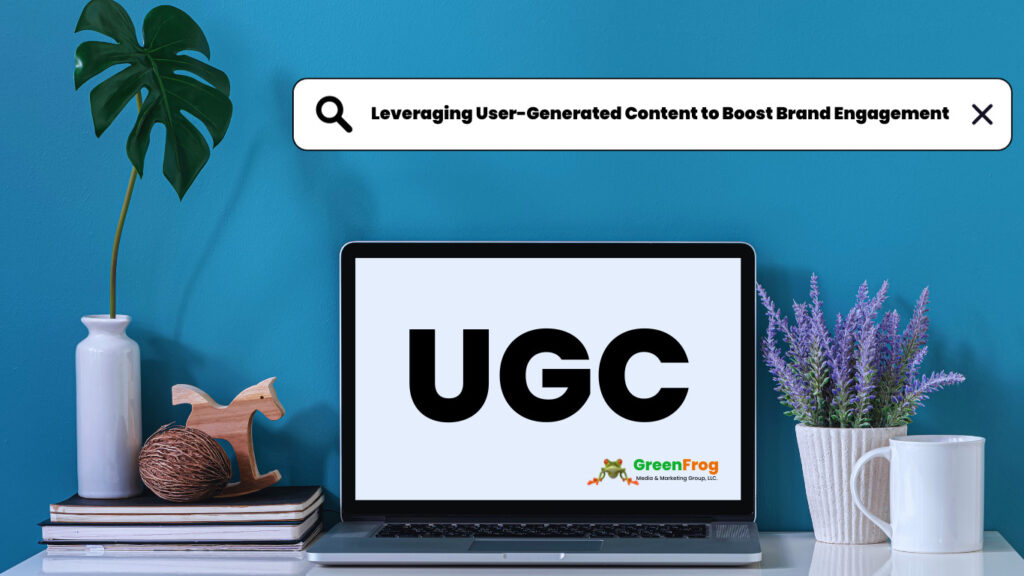I. Introduction
User-Generated Content (UGC) is a potent force generating brand engagement and trust in the broad expanse of the digital marketing world.
In an age when authenticity is of the utmost importance, user-generated content (UGC) has emerged as the heart and soul of successful online marketing initiatives. But what exactly is UGC, and why is it important? Let’s go on an adventure to discover the depths of this transforming idea and how it may drive your company into the spotlight.
II. Understanding User-Generated Content (UGC)

At its core, User-Generated Content refers to any form of content—be it social media posts, product reviews, videos, or blog comments—created by individuals rather than the brand itself. It’s the unfiltered, raw expression of customers’ experiences and opinions, making it a genuine reflection of the public’s sentiments. The beauty of UGC lies in its authenticity and credibility. When potential customers see real people, not paid influencers, advocating for a product or service, it establishes a profound sense of trust.
Consider the impact this has on consumers’ purchasing decisions. In a world inundated with advertisements, UGC stands out as a beacon of truth. It’s the friend’s recommendation, the stranger’s testimonial, and the unscripted joy captured in a video—all shared voluntarily, without any hidden agendas. This genuineness is what sets UGC apart, making it a goldmine for brands aiming to connect with their audience on a profound level.
Why UGC Matters
UGC matters because it bridges the gap between brands and their customers. It transforms the passive consumer into an active participant, giving them a voice that resonates across digital platforms. When people see others enjoying a product or service, they are more likely to engage, relate, and ultimately make a purchase. It humanizes the brand, creating a sense of community and camaraderie among customers. Moreover, UGC serves as powerful social proof, validating a brand’s claims and offerings in the eyes of potential buyers.
The Impact on Brand Engagement
UGC is not just a buzzword; it’s a strategic imperative for businesses aiming to boost brand engagement. When customers become creators, they invest emotionally in the brand, fostering a loyal relationship that goes beyond transactions. Sharing UGC on official brand channels enhances the sense of belonging, encouraging others to contribute their stories. This dynamic interaction between brand and customer cultivates a vibrant online community where ideas are exchanged, experiences are shared, and brand loyalty deepens.
III. Benefits of User-Generated Content for Brands

- Increased Brand Authenticity: One of the most significant advantages of UGC lies in its ability to enhance brand authenticity. Unlike carefully curated brand content, UGC is raw, unfiltered, and genuine. It emanates from real experiences and emotions, creating an authentic connection between the brand and its audience. When potential customers see real people enjoying products or services, they are more likely to trust the brand, leading to increased credibility and authenticity.
- Social Proof: UGC serves as a powerful form of social proof. When consumers witness their peers sharing positive experiences, it validates the brand’s claims and influences their own purchasing decisions. Reviews, testimonials, and images shared by satisfied customers create a sense of trust within the community. This social validation is invaluable in the age of online skepticism, encouraging potential customers to engage with the brand with confidence.
- Improved Customer Loyalty: UGC nurtures a sense of belonging and community among customers. When brands showcase user-generated content, they acknowledge and celebrate their customers, transforming them from passive buyers to active brand advocates. This recognition creates a reciprocal relationship where customers feel valued, fostering a deeper sense of loyalty. Moreover, customers who see their content featured are likely to continue engaging with the brand, creating a cycle of loyalty and advocacy.
IV. Encouraging User-Generated Content Creation
Crafting Irresistible Incentives
Encouraging users to create and share content starts with offering compelling incentives. Contests, for example, tap into people’s competitive spirit. By hosting creative challenges or photo contests related to your brand, you not only stimulate UGC but also generate buzz and excitement. Hashtags, on the other hand, provide a simple yet effective way for users to contribute. Creating a unique, catchy hashtag associated with your brand or campaign encourages users to share their experiences publicly, creating a collective narrative around your products or services.
Rewards Programs that Matter
Rewarding users for their UGC efforts can significantly boost participation. Implementing a robust rewards program where users earn points, discounts, or exclusive access for every contribution motivates them to engage actively. These rewards create a sense of value and appreciation, strengthening the bond between the brand and its customers. Moreover, recognizing and appreciating exceptional UGC by featuring it on your website or social media platforms can further incentivize others to contribute.
Fostering a Supportive Community
Building an interactive and supportive brand community is pivotal. Actively engage with your audience by responding to their comments, acknowledging their contributions, and making them feel heard. Encourage discussions and debates related to your brand, products, or industry. By nurturing a space where customers feel valued and respected, you create an environment where they are more willing to share their experiences organically. Additionally, involving customers in decision-making processes, such as product development or campaign ideas, empowers them, making them more invested in your brand’s success.
V. Showcasing User-Generated Content

Platforms for Showcasing UGC: Social Media, Website, Email Campaigns
User-Generated Content finds its home on various platforms, each offering unique advantages. Social media platforms like Instagram, Twitter, and Facebook allow brands to share UGC seamlessly. Integrating UGC into the company website, especially through dedicated user testimonial sections or interactive galleries, provides a hub for customers’ authentic experiences. Email campaigns can feature UGC through visually appealing newsletters, showcasing customer stories, images, and reviews.
Guidelines for Curating and Displaying UGC Effectively
Curating UGC is an art that involves selecting content that resonates with the brand’s message and values. Effective curation starts with understanding the audience and the brand identity. Choose content that aligns with your narrative, resonates emotionally, and highlights genuine experiences. Organize UGC in visually appealing formats—grids, carousels, or video compilations—making it easy for viewers to engage.
Obtaining Permission and Ensuring Ethical Practices
Respecting the privacy and consent of users is paramount when showcasing UGC. Requesting permission from users before featuring their content showcases ethicality and builds trust. Implement clear and transparent guidelines on your website and social media profiles, explaining how users can grant permission for their content to be shared. Tools like consent forms and hashtags can facilitate this process, ensuring that ethical standards are maintained.
VI. Monitoring and Moderating User-Generated Content
Importance of Monitoring UGC
Monitoring UGC is akin to safeguarding your brand’s reputation. In the vast sea of content, there might be occasional waves of negativity or misinformation. By actively monitoring UGC, brands can respond promptly, addressing concerns and maintaining a positive dialogue with their audience. Real-time monitoring also allows brands to identify trends and capitalize on positive feedback, enhancing their marketing strategies.
Moderation Techniques
Moderation is the key to ensuring that the content shared aligns with the brand’s values and guidelines. Automated tools can help filter out inappropriate language or content that violates community standards. Keyword filters can catch potentially offensive words, while image recognition technology can flag inappropriate visuals. Human moderation is equally vital, providing nuanced judgment that automated systems might lack. Human moderators can assess context, understanding the intent behind a message, which is crucial in maintaining a balanced online environment.
Handling Negative or Critical UGC
Negative or critical UGC, when handled adeptly, can turn into an opportunity. Instead of ignoring or deleting negative comments, brands can engage with these users professionally and constructively. Acknowledging the concern shows that the brand values feedback and is open to criticism. Responding promptly and empathetically can often defuse a situation, turning a dissatisfied customer into a brand advocate. Encourage dialogue and offer solutions publicly while addressing specific concerns privately. This approach demonstrates transparency and a commitment to customer satisfaction, which can resonate positively with a wider audience.
VII. Legal and Ethical Considerations

Legal Aspects of UGC: Copyright and Permissions
One of the primary concerns when dealing with UGC is copyright. Copyright laws protect every piece of content, whether it be a picture, video, or review, giving the creator the sole right to use it. To avoid legal complications, brands must obtain the necessary permissions before using UGC for promotional purposes. This includes reaching out to the content creators and securing their consent in writing. Without explicit permission, using UGC can lead to copyright infringement, resulting in legal consequences.
Guidelines for Respecting Copyright Laws
Respecting copyright laws is not only a legal obligation but also a way to maintain a positive brand image. Brands can follow these guidelines to ensure they stay within legal boundaries while leveraging UGC:
- Obtain Explicit Consent: Always seek explicit permission from the content creators before using their UGC. Clearly state how the content will be used, whether it’s for social media posts, advertisements, or other promotional materials.
- Credit the Creators: Provide proper attribution to the original creators of the content. This not only complies with copyright laws but also acknowledges and appreciates the contributors.
- Use Licensed Content: When in doubt, opt for licensed content available through stock photo websites or other platforms. Licensed content comes with clear usage rights, eliminating the risk of copyright violations.
- Educate Your Team: Ensure everyone involved in content curation and marketing campaigns understands copyright laws and the importance of obtaining permissions. Implement clear protocols within your organization.
Protecting Brands from Legal Disputes
In addition to respecting copyright laws, brands can take proactive measures to protect themselves from legal disputes related to UGC.
- Terms of Use: Clearly outline terms of use on your website and social media platforms. Make sure users are aware of the intended use of their submissions by outlining how the brand may use user-generated content.
- Moderation and Monitoring: Implement robust content moderation practices. Regularly monitor UGC to filter out any inappropriate or potentially infringing content. Swiftly remove any content that raises legal concerns.
- Legal Consultation: When in doubt, seek legal counsel. Consulting with legal experts well-versed in intellectual property rights can provide tailored advice, ensuring your UGC campaigns comply with the law.
VIII. Measuring the Impact of User-Generated Content
User-generated content (UGC) has become a potent tool for brands looking to build trust, authenticity, and engagement with their audience. But how do you know if your UGC efforts are paying off? To gauge the effectiveness of your UGC campaigns, you need to measure their impact. Here are key metrics and methods to consider:
- Engagement Rates: One of the clearest indicators of UGC success is increased engagement. Analyze likes, comments, shares, and retweets on UGC posts. Compare these metrics to your non-UGC content to see if UGC is driving higher engagement.
- Conversions: Ultimately, the goal is to convert engaged users into customers. Track conversion rates from UGC-related content to measure its direct impact on sales or lead generation.
- Brand Mentions: Monitor how often your brand is mentioned in UGC across various platforms. A surge in brand mentions indicates growing brand awareness and advocacy.
- Analytics Tools: Utilize analytics tools like Google Analytics, social media insights, and UGC-specific platforms to track UGC performance. These tools can provide detailed data on user interactions, referral sources, and conversions.
- Surveys and Feedback: Collect feedback from users who engaged with UGC. Understand their perception of your brand and whether UGC influenced their decisions.
IX. Conclusion
Consumers don’t just buy products; they invest in experiences and relationships. User-Generated Content has emerged as a powerful bridge between brands and their audiences, shaping these experiences and relationships authentically. By understanding the dynamics of UGC, encouraging its creation, showcasing it responsibly, and respecting legal and ethical boundaries, brands can harness its potential to boost brand engagement and loyalty.
In essence, UGC is not merely content; it’s a testament to the brand’s ability to connect with its consumers on a personal level. As businesses embark on this UGC journey, they don’t just enhance their bottom line; they create a community of advocates, turning customers into loyal partners in the brand’s success story. Through UGC, brands don’t just sell products; they create meaningful narratives, and in doing so, they redefine the future of marketing.



